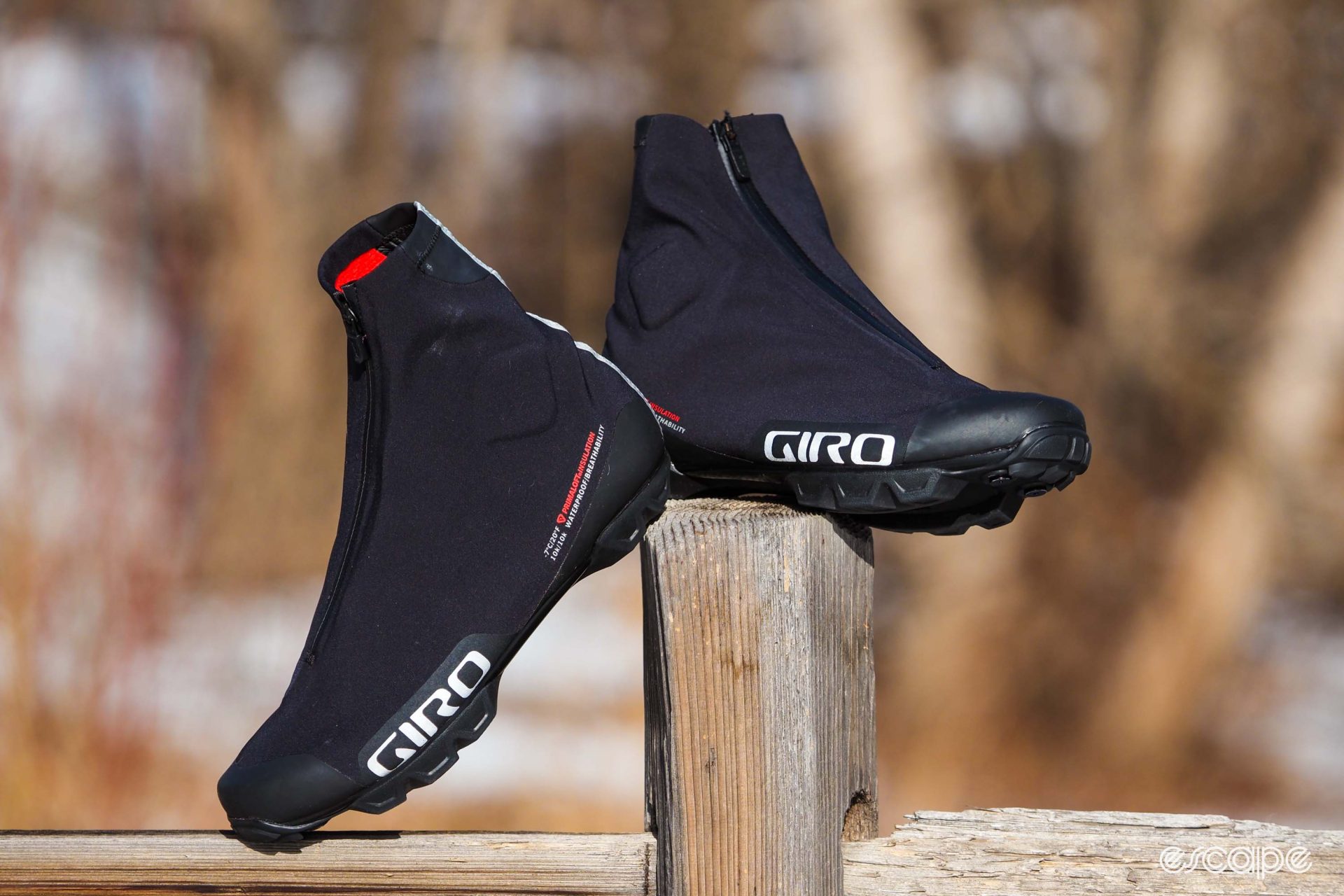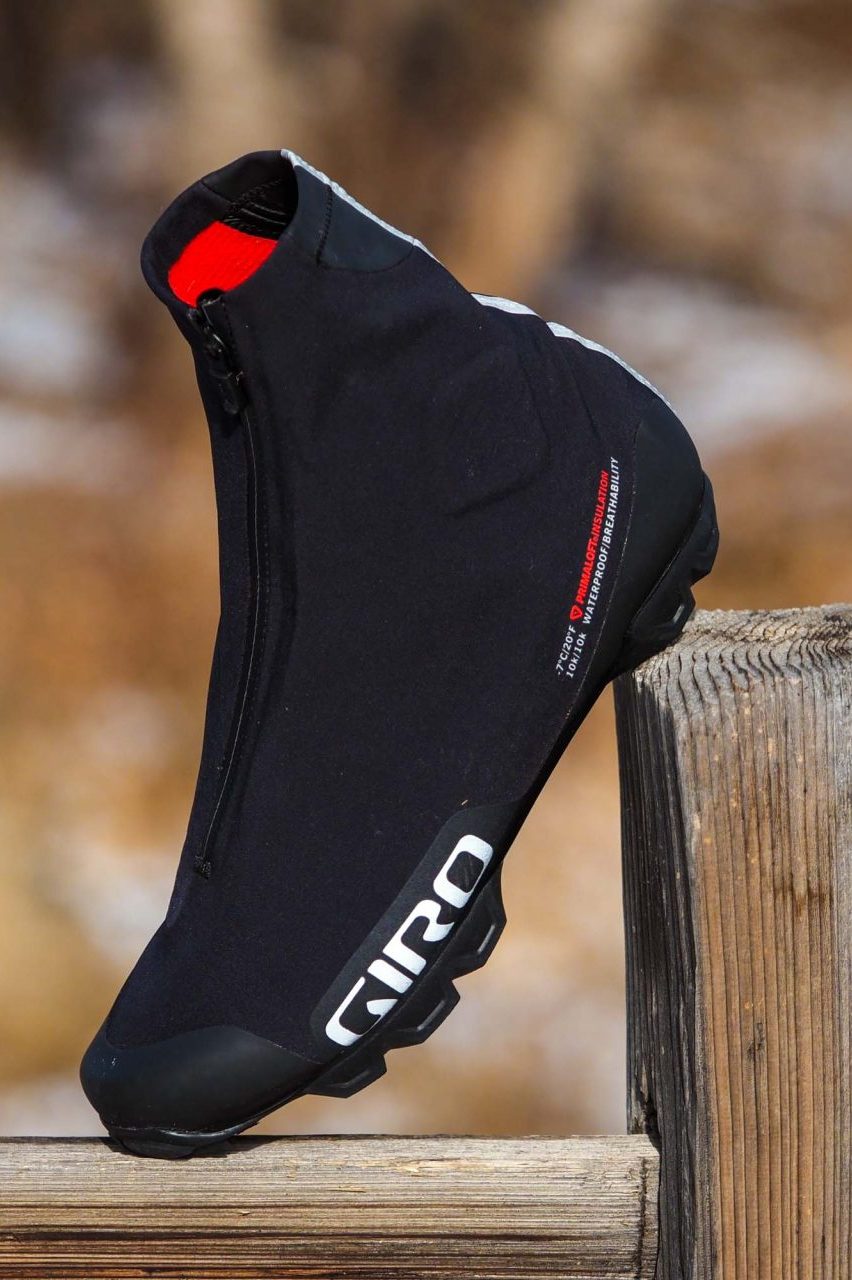Dedicated winter-specific cycling shoes may be a luxury, but for the hardier souls out there who have yet to try them, I’ve long been a believer that once you’ve treated yourself to a pair, you’ll never go back to booties. Not only are they much less of a hassle, but their built-in insulation almost always makes them much warmer, too.
As is the case with most winter cycling shoes, Giro’s new Blaze model follows a familiar formula that mimics the basic layout of cross-country ski boots.
On the outside is an integrated high-top shell that Giro says is both waterproof and breathable. A proper waterproof zipper runs nearly the full length of the shell for easy on/off, the heel and toe are reinforced with welded TPU, and big chunks of reflective material grace the heel and side. Both the medial and lateral sides of the ankle bone area sport diamond-shaped pads, too, although I suspect that’s more to provide a bit of extra warmth than Giro expecting some Blazer wearers to get a little rowdy.

Speaking of warmth, hiding underneath that zippered exterior is a fairly conventional low-top shoe, insulated with a synthetic Primaloft body plus a fuzzy brushed fleece lining that also graces the inside of the otherwise non-insulated outer shell. There’s even a brushed fleece top on the insole with a layer of foil (made of aluminized Mylar, presumably) underneath to help reflect heat, and the insulated tongue offers extended coverage to coddle the front of your ankles.
Anchoring all of this a basic fiber-reinforced nylon plate with a fairly aggressively treaded rubber outsole and two-bolt cleat interface. Giro says the “ice grip” rubber is specifically formulated for cold weather, and if you need a little more traction, there are fittings for optional toe studs.
Don’t expect to find a Boa dial closure system or anything similarly fancy, as easily getting these things on and off seems to have been the design priority here. As I said earlier, these are modeled after XC ski boots so all you get is a single quick-lace setup with some oversize pull tabs on the heel.
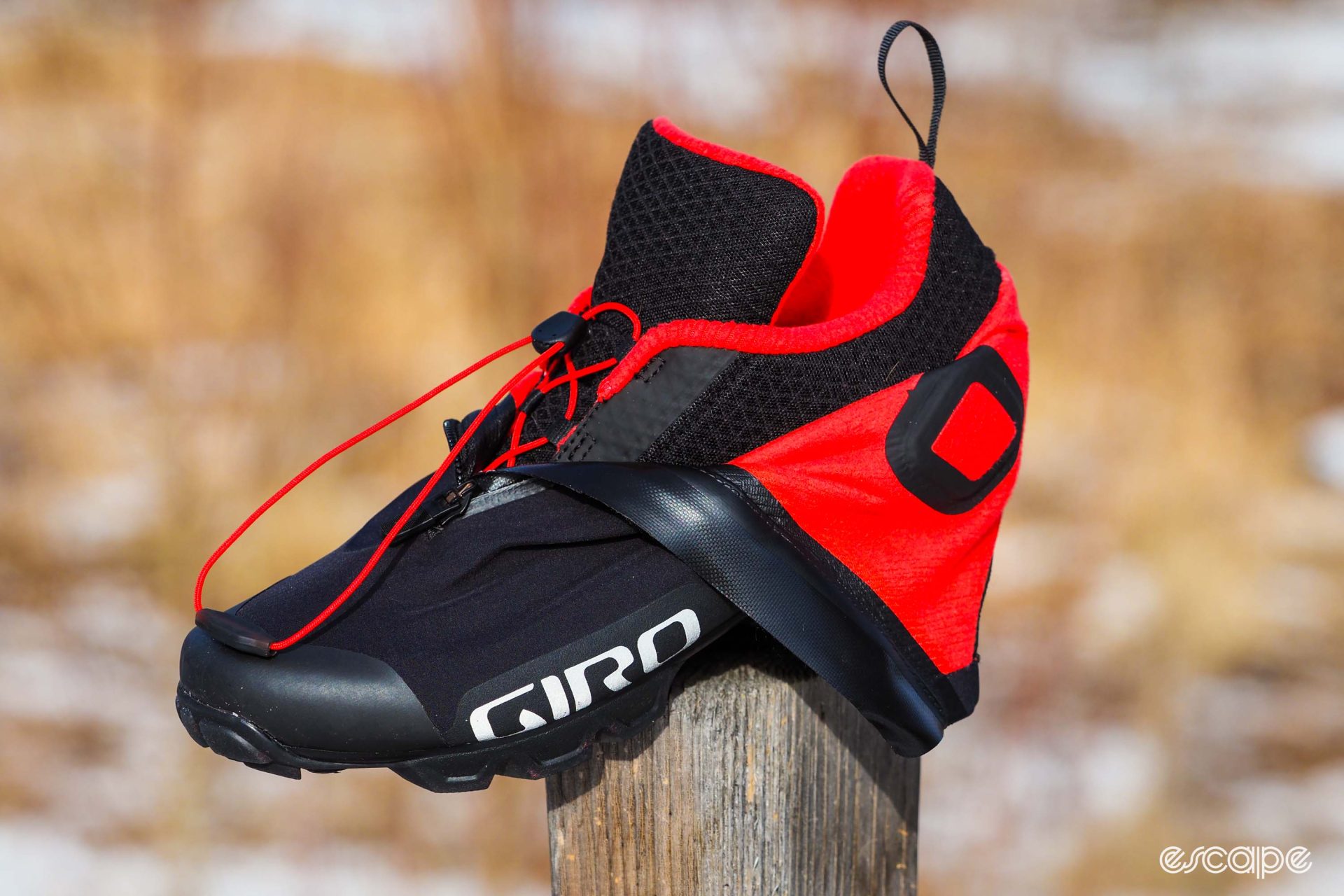
All together, Giro says on its web site that the Blaze should be good down to a chilly -10°C / 14°F (although curiously, the text printed directly on the shoe says -7°C / 20°F).
As you’d expect, they’re not at all light compared to regular cycling shoes; my sample pair of size 43 shoes came in at 794 g. Not unusually for winter-specific shoes, sizing is limited to whole sizes only, although the total selection is skewed toward the larger end with a 40-50 range. Retail price is US$250 / £210 / €230 (and not surprisingly, they’re not sold in Australia).
A respite from the cold
I should make it clear that I’ve grown increasingly intolerant over the years of feeling cold, and I get particularly grumpy if my toes feel chilly during a ride where I’m otherwise pretty comfortable. Thankfully for Giro, the Blaze shoes live up to their namesake as they’re surprisingly warm given their relatively low profile.
I didn’t get quite to the lower of those two conflicting temperature ratings during testing, but my feet were downright toasty on an overcast day of -7°C / 20°F with just some thinner DeFeet wool socks underneath, so the -10°C / 14°F figure actually seems quite believable. I unfortunately can’t comment on the waterproofness claims, though, as any water I encountered during test rides were of the thoroughly frozen variety. The DWR coating on the shell at least seems reasonably robust in my kitchen sink, although riders looking to tackle especially wet conditions may want to first seal the inside of the cleat pocket regardless as it’s otherwise only closed off by the lasting board.

Impressively, the Blaze shoes also seem to have a decently broad upper temperature limit. Gravel rides I did with temperatures closer to 7°C / 45°F didn’t leave my feet feeling hot and/or clammy by the time I got home, which suggests that breathable outer shell material might actually be breathable. But given the complete lack of venting, I probably wouldn’t want to wear these if the temperatures were much warmer.
The Blaze isn’t all that bad as a cycling shoe in general, either.
Given the simple speed-lace closure, it’s most definitely not as secure-feeling as a proper summer race shoe. However, the hold is pleasantly even around the middle of the foot, and heel hold is much better than I expected with virtually zero slip, even when on foot – better than some summer shoes I’ve used, in fact. The basic fiber-reinforced nylon plate is perfectly fine, too. It’s obviously not as stiff – or perhaps more importantly, as thin – as a genuine carbon fiber composite piece, but it gets the job done, and as promised, the tread rubber really is decently grippy in very cold conditions.
An unexpected hit to the self-esteem
As warm as the Blaze shoes are, and as pleasant as they are to actually pedal in, there are some missteps here that are hard to overlook.
Although the midfoot area of the Blaze is fairly average in terms of width and volume, the toe box is pretty narrow with an aggressive taper. That said, the Blaze’s cushy construction is more accommodating than you’d expect given the lack of stiffer structural reinforcements that you’d usually find in a good summer shoe, but there’s only so much it can handle. If you usually only find comfort in wider shoes or those with more squared-off toeboxes, this is definitely a try-before-you-buy situation.
There’s also almost no arch support at all, either incorporated directly the nylon plate or built into the insole. Giro doesn’t even bother with its long-running Supernatural insole design with its interchangeable arch cookies for the Blaze, either. You’re obviously free to swap to aftermarket footbeds with more support, but most options will cut into the interior volume, and you’ll lose the insulating properties of the stock insole, too.
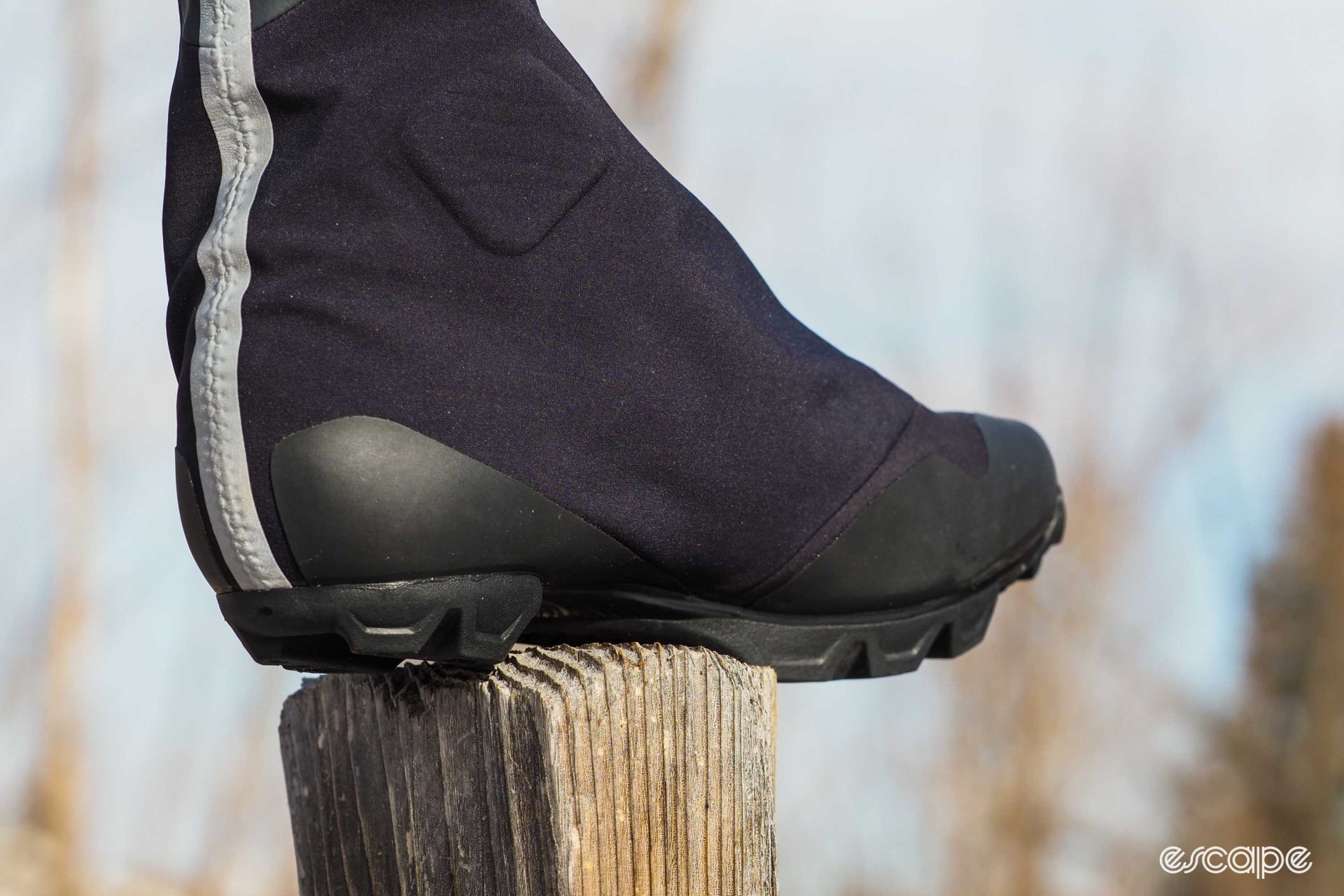
And while the tread rubber does a good job of maintaining traction when it’s cold out, I would have preferred a more aggressive tread design in general, particularly around the front edge.
Unfortunately, the biggest ding against the Blaze is one that pretty severely impacts the quality of fit, and also strikes me as easily avoidable.
I’ve ridden a number of foul-weather cycling shoes with similar profiles to the Blaze, and as you’d expect, the high-cut cuffs are made with stretchy materials or include some kind of adjustable closure. On the Blaze, however, you get neither of these. You can see where Giro apparently intended for some stretchy material to be built into the small U-shaped panel on the back of the cuff, but it’s just way too tight. Making matters far worse, that panel doesn’t seem to break in with use, and the opening is weirdly small to begin with.
How small, you’re wondering? When fully zipped, the inner circumference of my size 43 samples is just 20 cm – now go ahead and compare that to the outer circumference of your ankles where you think the tops of these might end up. Oh, and then add whatever thickness socks you think you’d wear for winter riding. Never thought you had cankles? Well hey, now you do, courtesy of Giro.
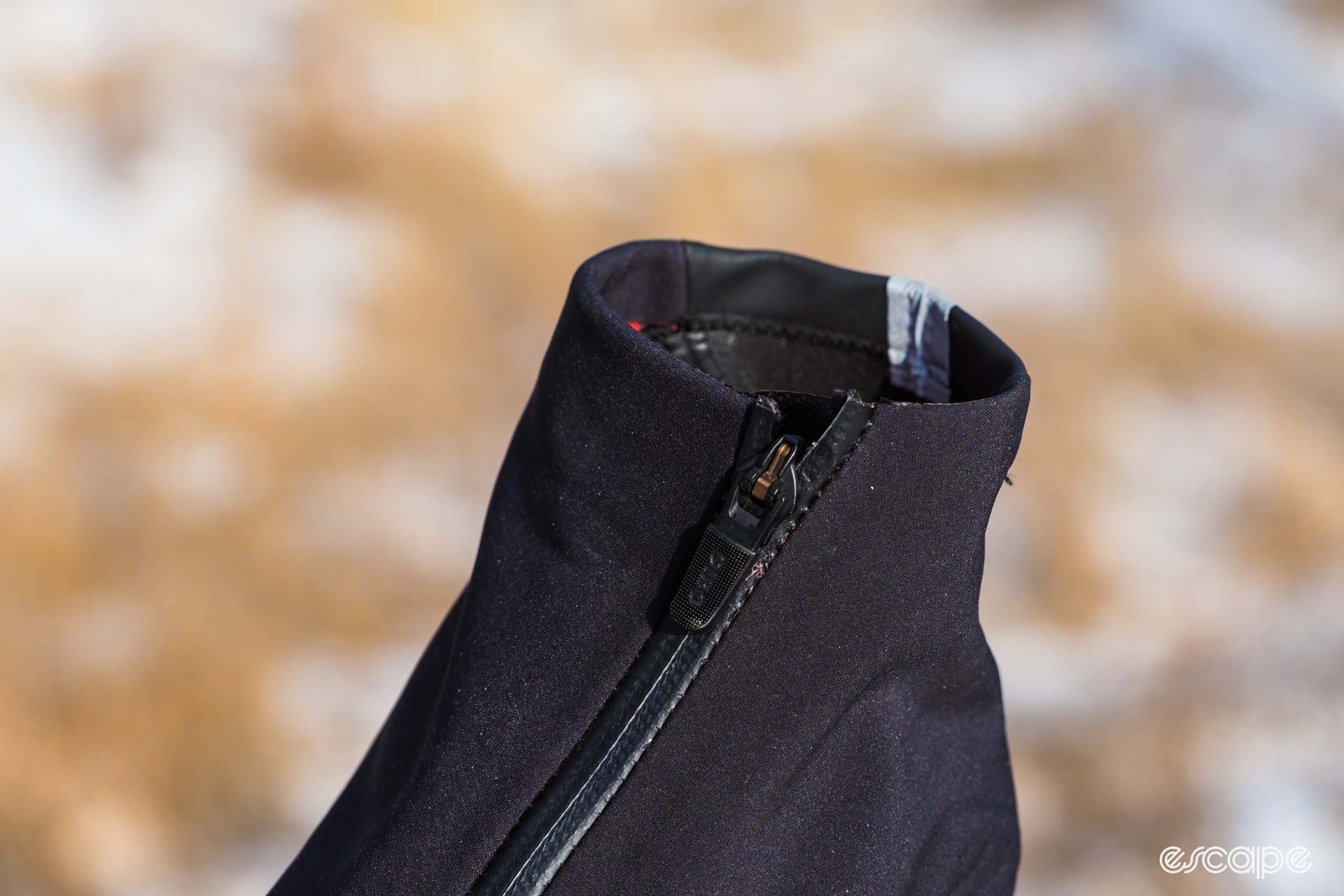
“The Giro Blaze shoe was designed with wet weather in mind,” explained Giro product manager Josh Rebol. “One of the main attributes we wanted to address was the prevention of water leaking into the top of the shoe. Therefore, we designed the collar from a combination of functional stretch woven and elastic fabrics to provide just the right amount of stretch along with a snug fit for the ultimate performance, comfort, and dryness for even the wettest days out on the bike. We are hopeful that the Giro Blaze fits a broad range of riders with various ankle widths, but regardless, Giro offers a 60-day comfort guarantee on all footwear.”
Kudos to Giro for being very intentional with wanting to seal off the cuff from water, but in my opinion, this goes too far. I was still able to ride in these, but preferred to keep the zipper partially open for comfort and circulation reasons – which, of course, partially defeats the purpose of the high-top format, and negates Giro’s argument for the snug fit. If you were hoping these might be a decent option for wet-weather riding, I’d say only the slightest of climber-types should even consider these. I’ve no doubt a good tailor, cobbler, or outdoor apparel repair specialist might be able to fix this, but that would add to the already-significant cost, and more to the point, this problem shouldn’t exist in the first place.
That’s quite the shame, too. The arch support issue can be fixed without too much trouble, and while I’d like to see a more progressive last, the reality is there are plenty of folks with narrower and/or lower-volume feet that will fit these things just fine.
But that circulation-restricting ankle thing? It’s practically a deal breaker for me. Maybe wait until these are on blowout, and then spend the spring and summer finding someone to fix the cuff for you.
So close, Giro. So close.
More information can be found at www.giro.com.
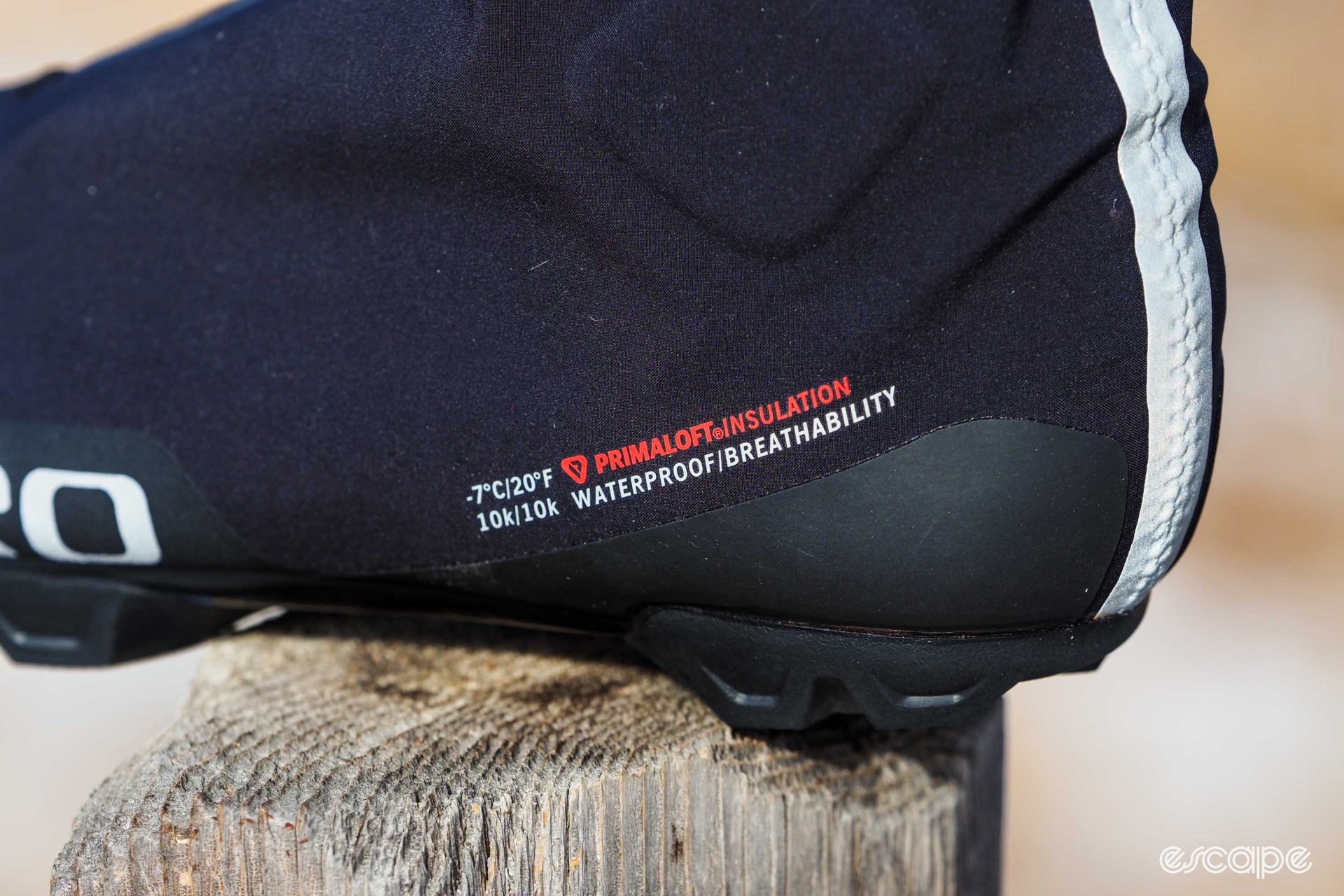

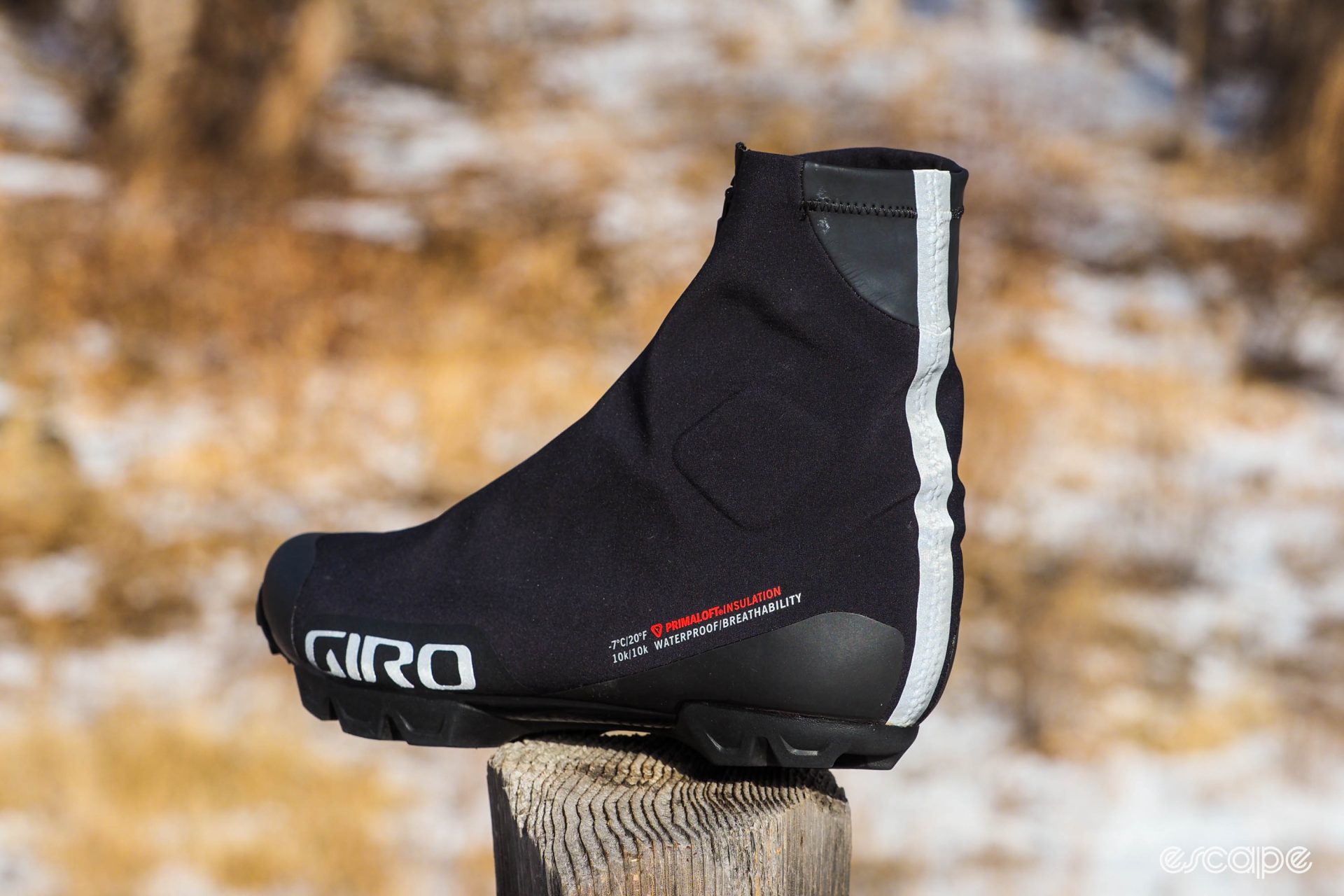
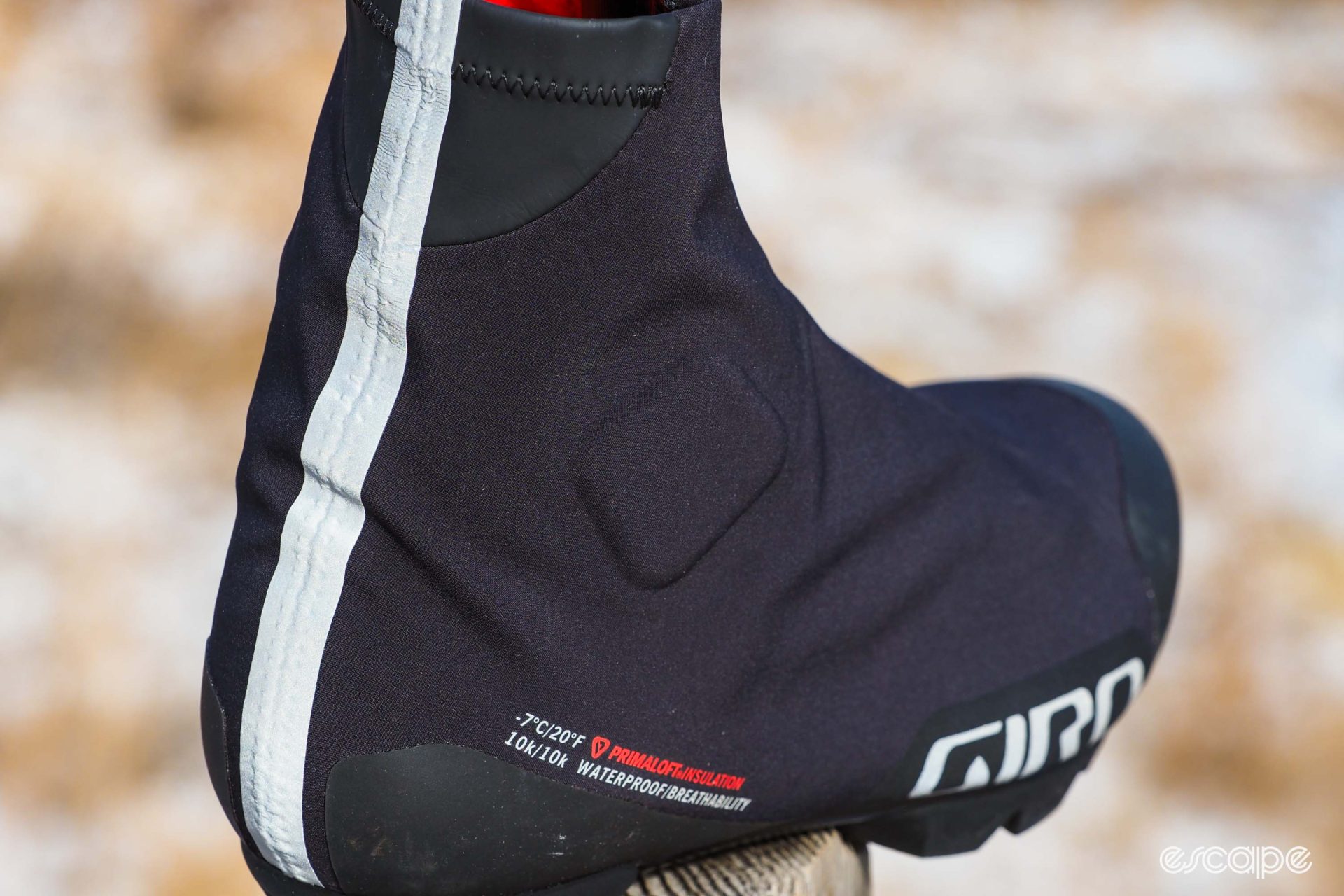
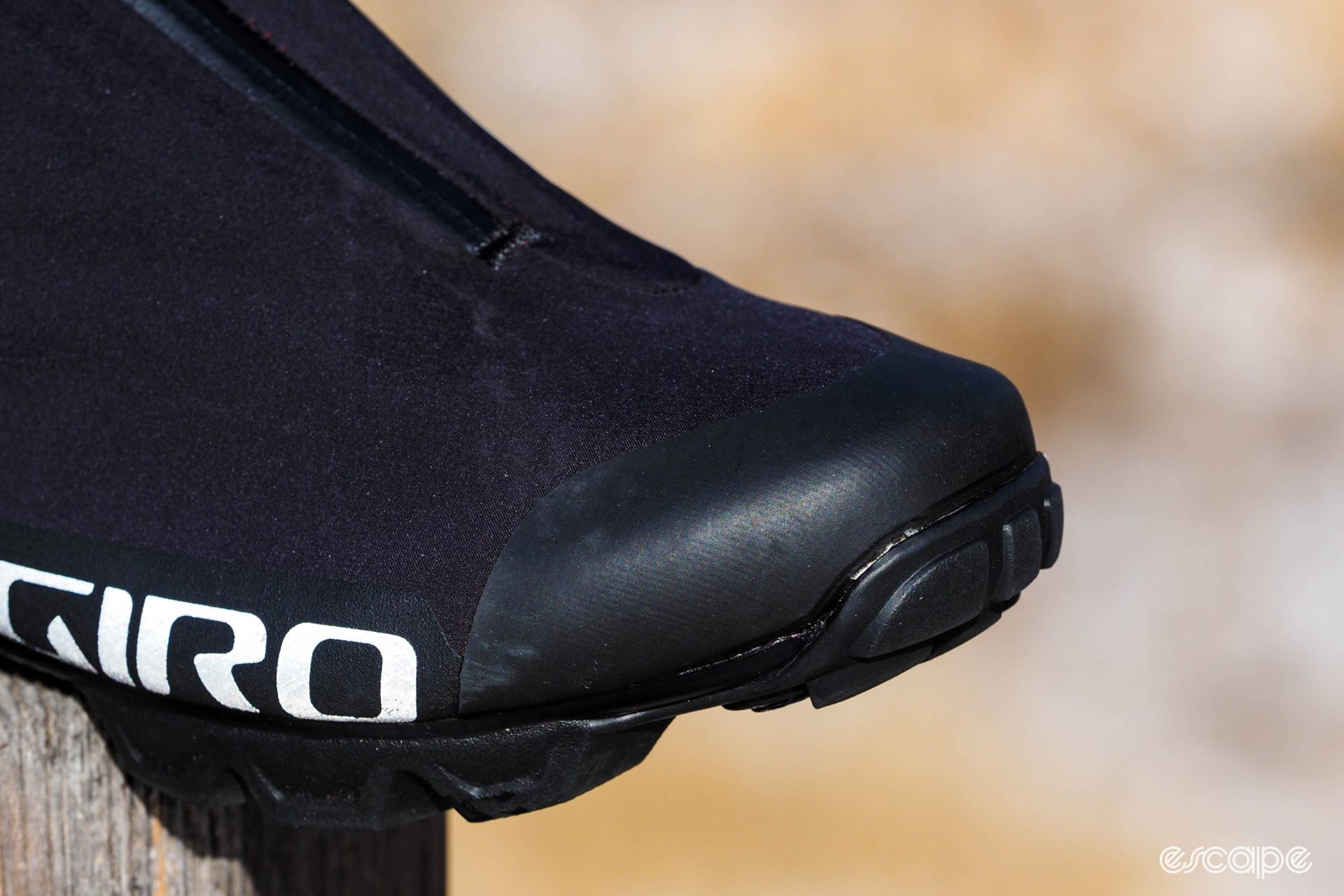
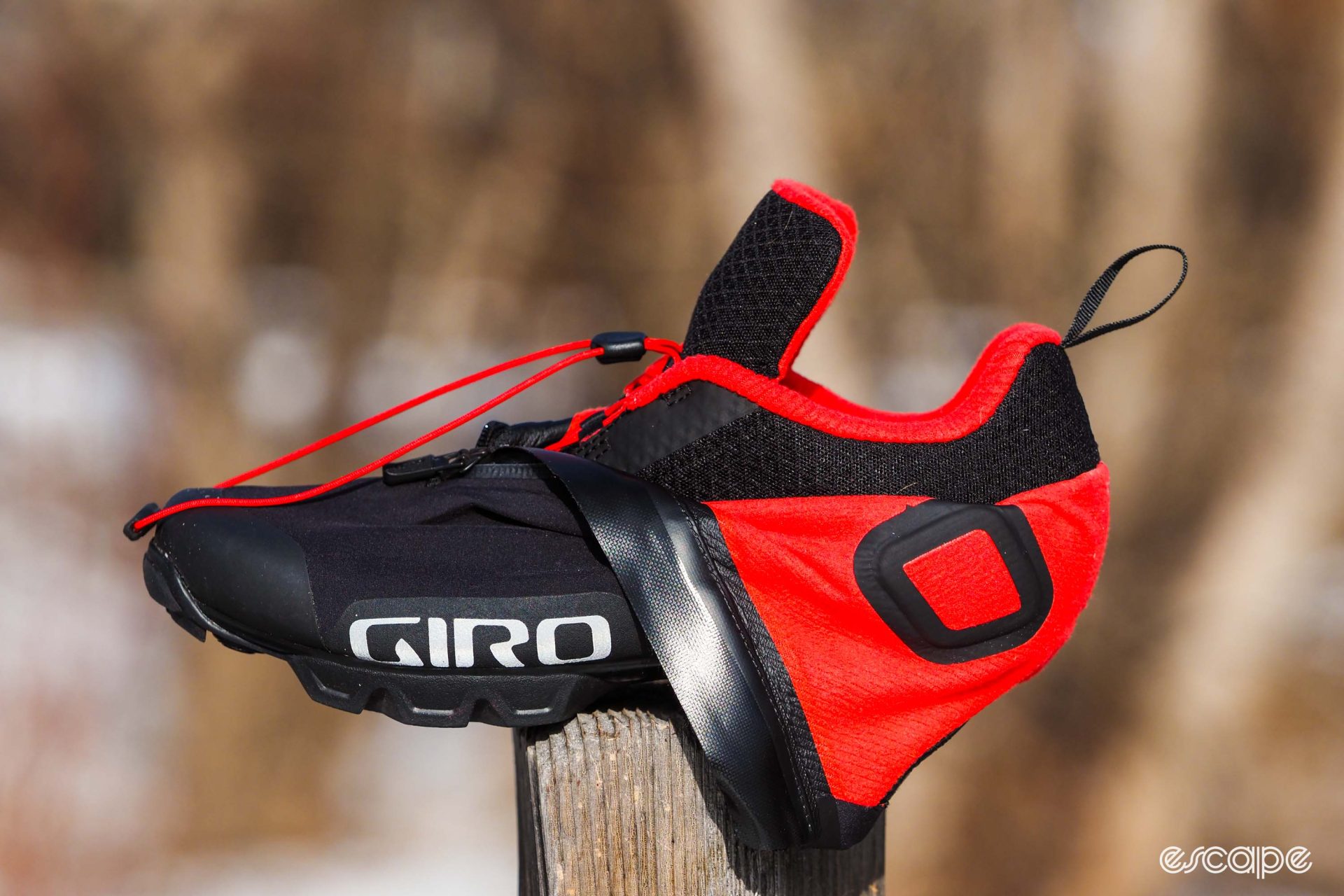
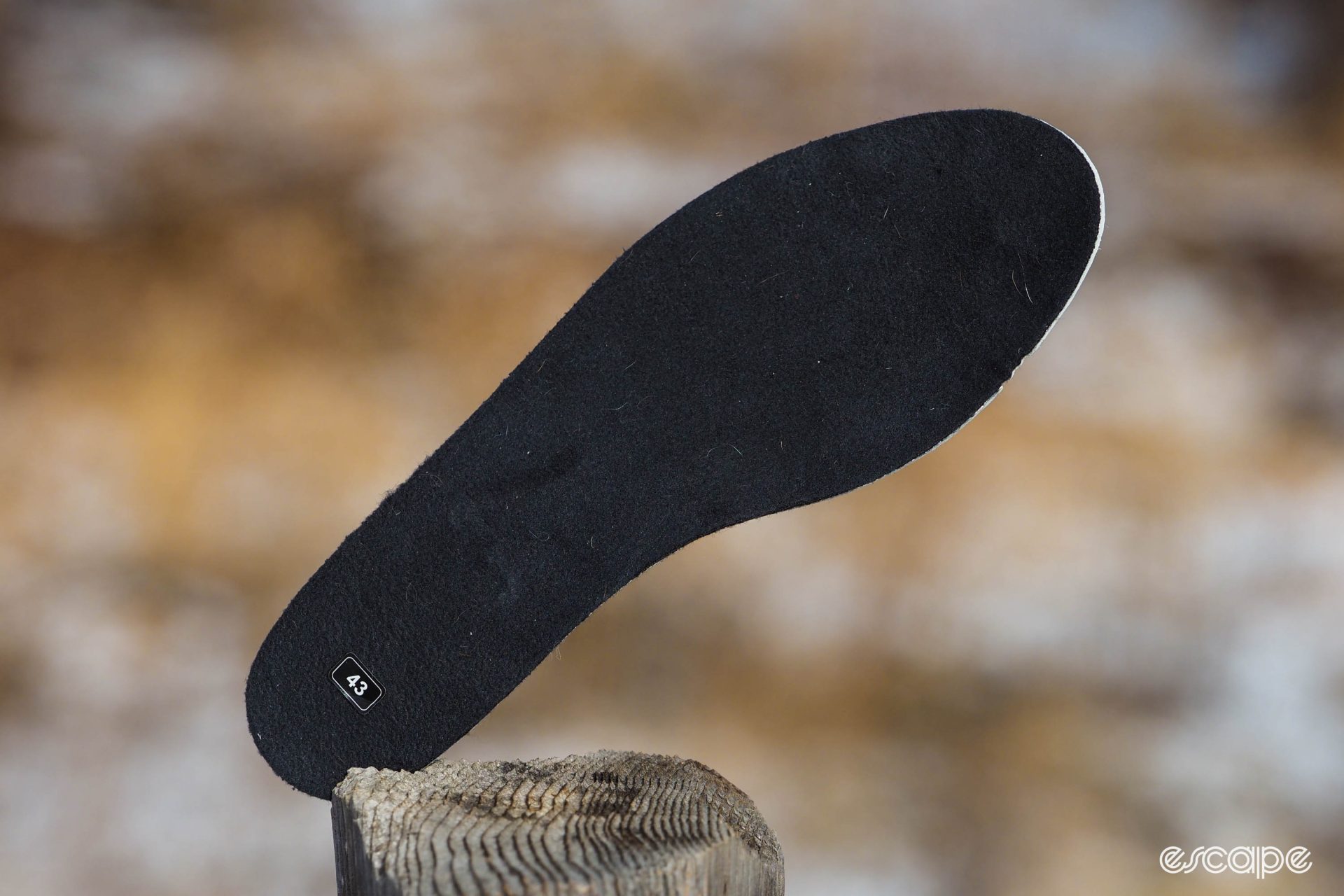
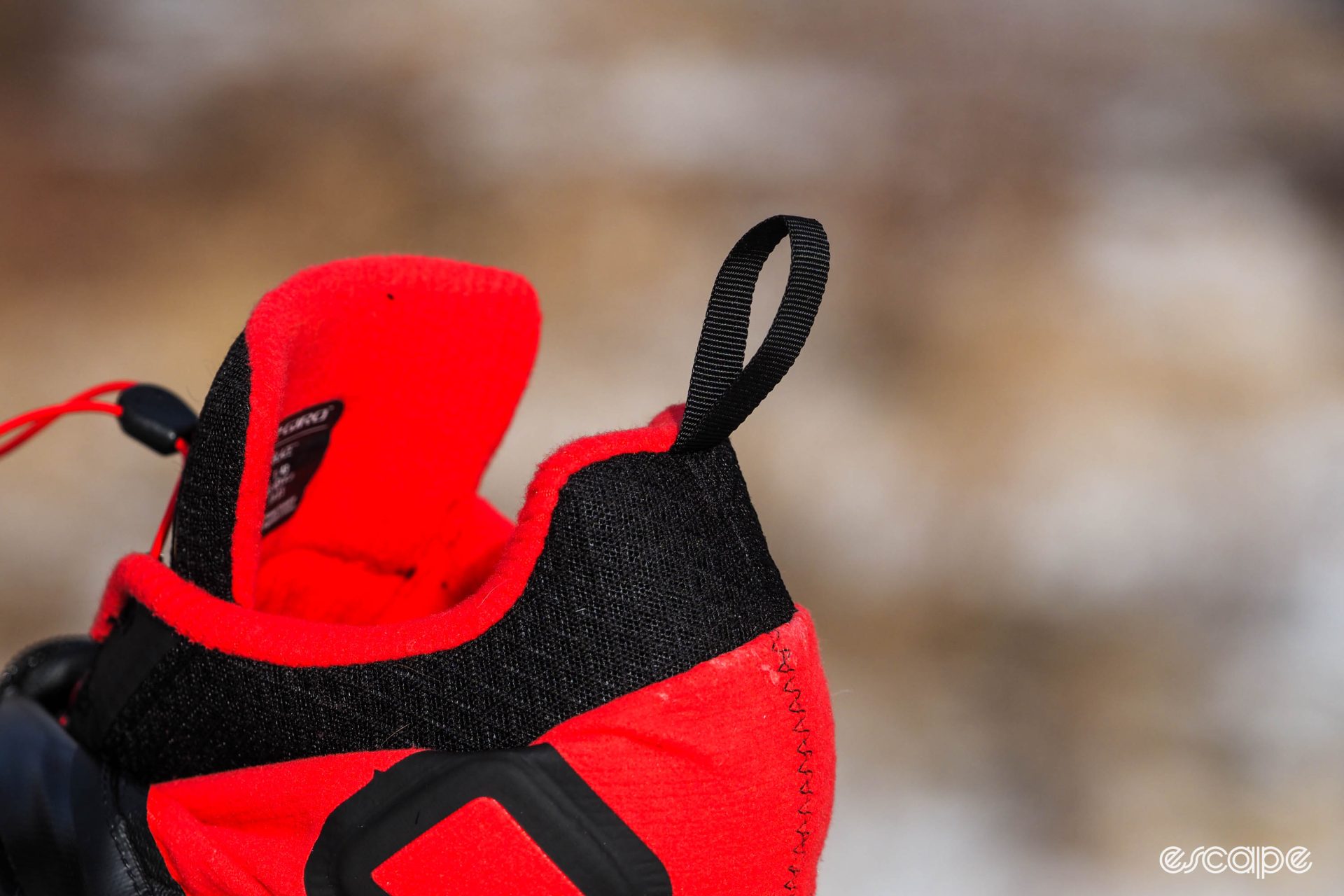
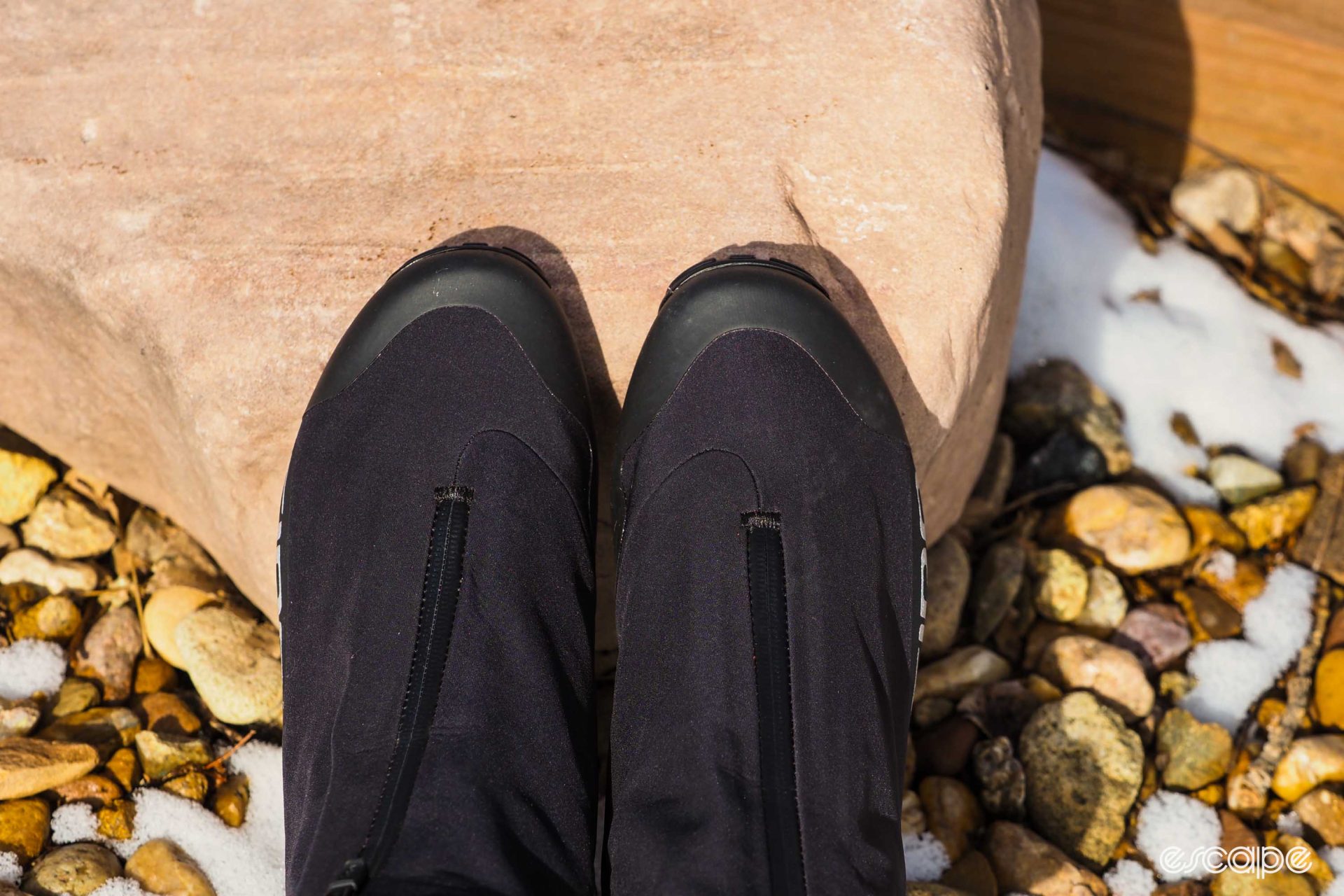
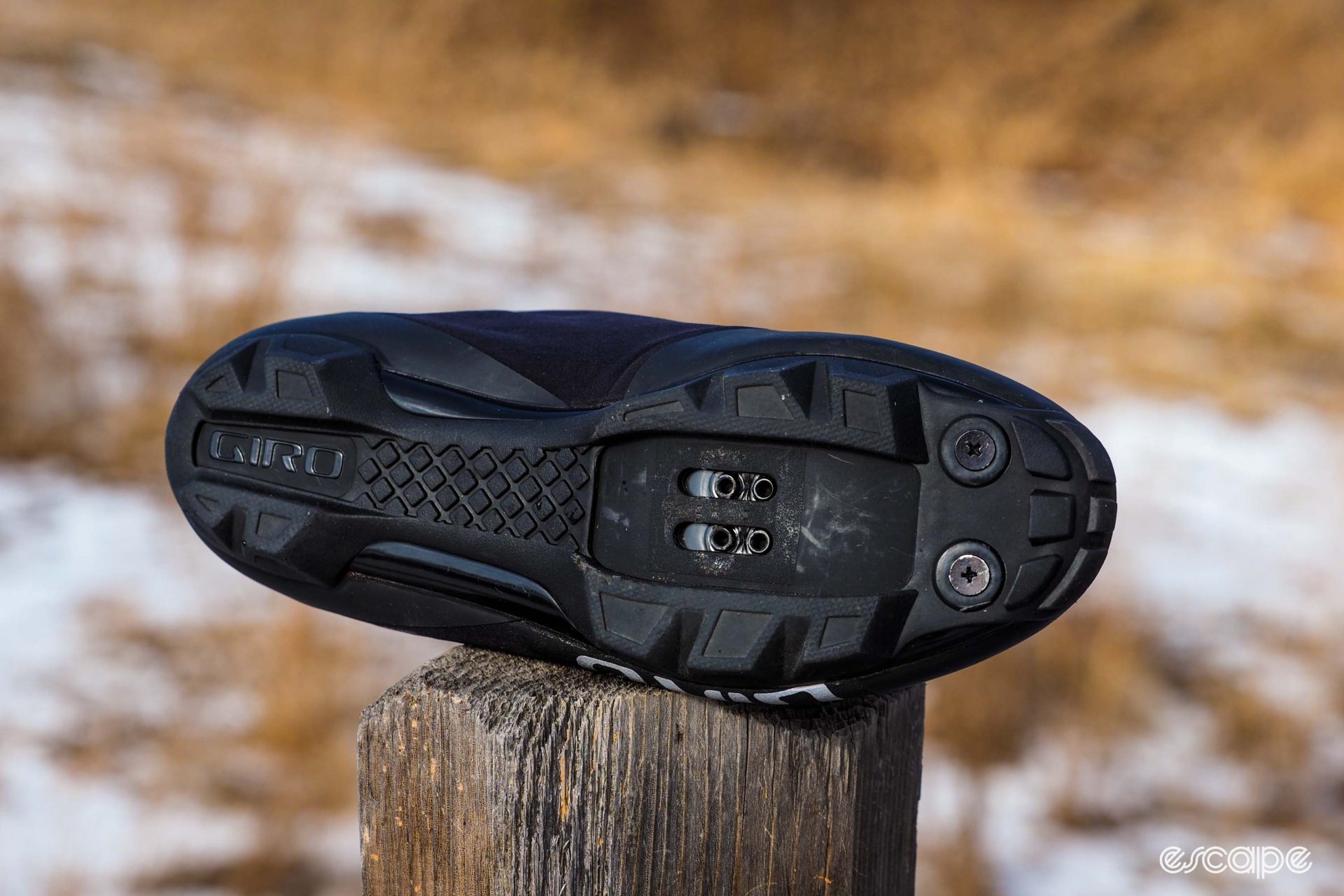
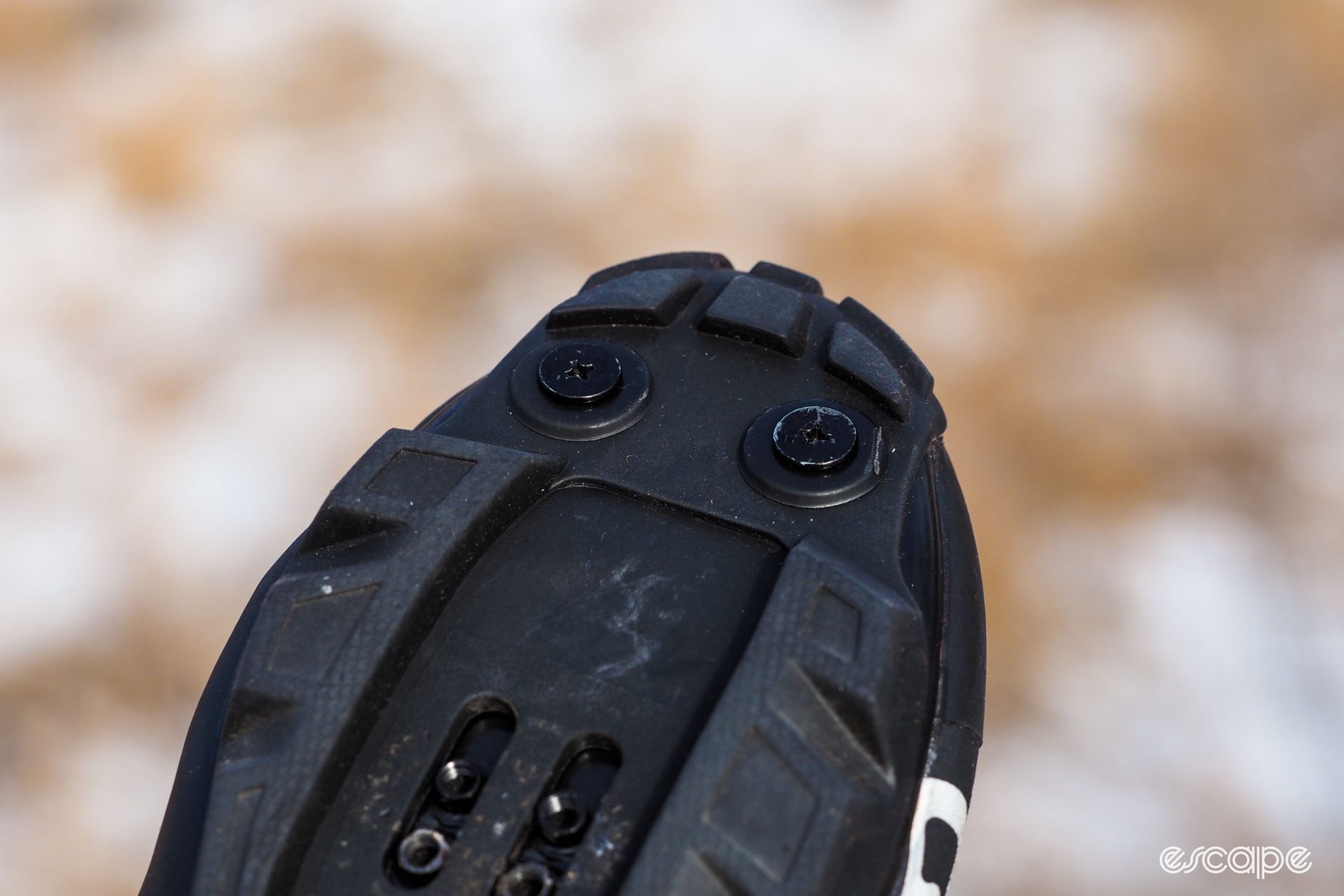
What did you think of this story?
